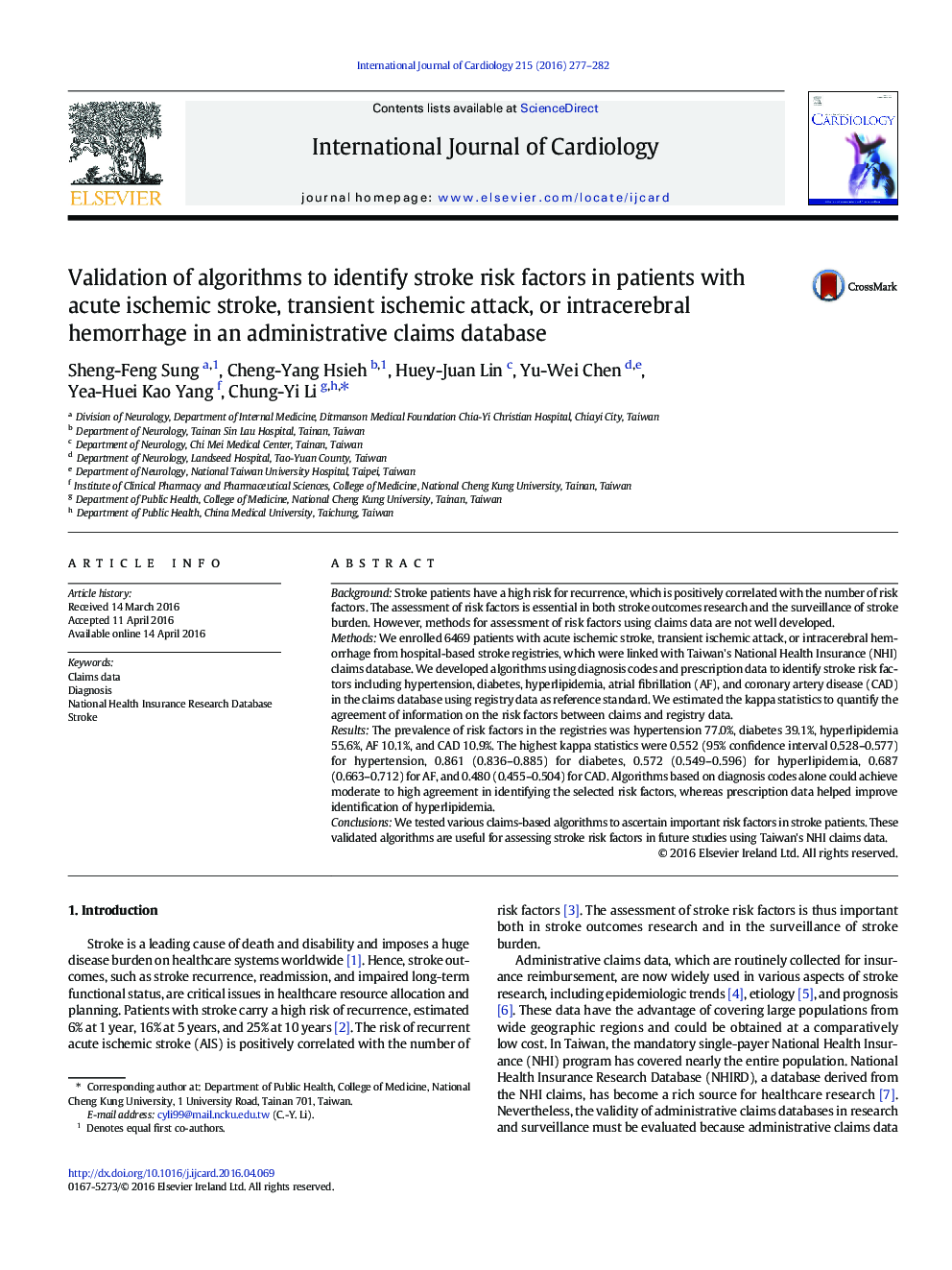| Article ID | Journal | Published Year | Pages | File Type |
|---|---|---|---|---|
| 5963924 | International Journal of Cardiology | 2016 | 6 Pages |
BackgroundStroke patients have a high risk for recurrence, which is positively correlated with the number of risk factors. The assessment of risk factors is essential in both stroke outcomes research and the surveillance of stroke burden. However, methods for assessment of risk factors using claims data are not well developed.MethodsWe enrolled 6469 patients with acute ischemic stroke, transient ischemic attack, or intracerebral hemorrhage from hospital-based stroke registries, which were linked with Taiwan's National Health Insurance (NHI) claims database. We developed algorithms using diagnosis codes and prescription data to identify stroke risk factors including hypertension, diabetes, hyperlipidemia, atrial fibrillation (AF), and coronary artery disease (CAD) in the claims database using registry data as reference standard. We estimated the kappa statistics to quantify the agreement of information on the risk factors between claims and registry data.ResultsThe prevalence of risk factors in the registries was hypertension 77.0%, diabetes 39.1%, hyperlipidemia 55.6%, AF 10.1%, and CAD 10.9%. The highest kappa statistics were 0.552 (95% confidence interval 0.528-0.577) for hypertension, 0.861 (0.836-0.885) for diabetes, 0.572 (0.549-0.596) for hyperlipidemia, 0.687 (0.663-0.712) for AF, and 0.480 (0.455-0.504) for CAD. Algorithms based on diagnosis codes alone could achieve moderate to high agreement in identifying the selected risk factors, whereas prescription data helped improve identification of hyperlipidemia.ConclusionsWe tested various claims-based algorithms to ascertain important risk factors in stroke patients. These validated algorithms are useful for assessing stroke risk factors in future studies using Taiwan's NHI claims data.
